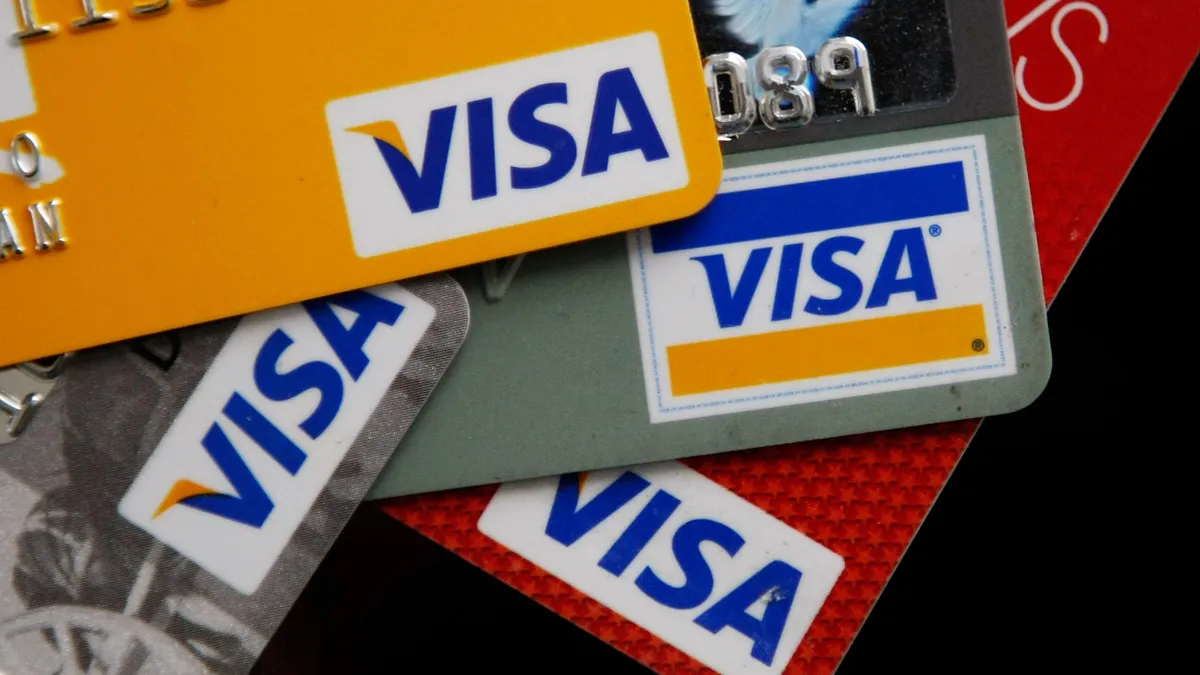Dive Brief:
- During the Black Friday through Cyber Monday period in November, buy now, pay later app downloads among U.S. consumers declined 4.5% from last year, reversing course from last year’s 4.4% year-over-year growth over 2021, according to a Bank of America analysis shared with Payments Dive.
- Globally, the number of buy now, pay later daily active users rose 12% month-over-month between Black Friday and Cyber Monday last month, compared to the same week in October. That increase was lower than the 16% increase last year for the same month-over-month comparison, according to the report.
- For the week that included Black Friday and Cyber Monday this year, from Nov. 20 through Nov. 27, worldwide buy now, pay later downloads spiked 64% on a month-over-month basis to 1.6 million, according to the report, which cited data from research firm SensorTower. That was a smaller increase than the 68% month-over-month growth last year, the report said.
Dive Insight:
Buy now, pay later is point-of-sale financing that lets consumers buy a product or service and then pay for it over time, typically six weeks, in some cases without paying interest on the loan.
Bank of America’s report builds on research indicating that consumers turned to buy now, pay later platforms during the Thanksgiving shopping weekend. Adobe Analytics’ analysis of e-commerce data found that spending via BNPL payment platforms rose 42.5% year-over-year. Adobe estimates this year will be a record-setting one for installment payment providers.
Though BNPL providers saw sizable growth during the Thanksgiving Day holiday weekend compared to the same week in the prior month, those gains were lower than the previous year.
In the U.S. market, Block’s Afterpay had the most downloads during the Thanksgiving holiday weekend this year, the report said. Nonetheless, Afterpay last year more than doubled its downloads for the period (104%) compared to October, but that growth rate shrank to 63% this year, according to Bank of America’s report. Similarly, rival Affirm experienced a 90% rise in its U.S. downloads month-over-month during Thanksgiving weekend in 2022, with a slowing of that rate to 77% this year, the report’s data showed.
Conversely, the smaller players saw their month-over-month growth with U.S. consumers increase this year compared to last year. While Sezzle saw its U.S. downloads rise 38% month-over-month during Thanksgiving weekend in 2022, that growth rose to 60% in 2023. Zip grew month-over-month U.S. downloads from 60% in 2022 to 85% in 2023, according to the report.
Globally, the Swedish BNPL player Klarna had the most user downloads for the holiday shopping period, with 727,478 downloads, according to the BofA data. Unlike its large U.S. rivals, its growth rate in the global market climbed for the holiday week this year, rising to 60% from 57% last year.
Though the holiday shopping period gave a boost to buy now, pay later companies, industry analysts are concerned about the long-term health of the payment segment. Last month, the credit rating agency Moody’s Investors Service released a report predicting that few buy now, pay later firms “will remain independent.” With declining interest from investors and an intensifying regulatory environment, the report predicts that some firms will close and others might be acquired.
In a November interview with Payments Dive, Niclas Boheman, vice president and senior credit officer at Moody’s, noted that BNPL firms will need to adjust to regulations across different jurisdictions. New regulations will likely slow the rollout of new products or product changes, Boheman predicted.
“Ultimately, it can mean that they would be accountable for their actions and potentially receiving fines if they are unable to follow all of the extra regulation,” Boheman told Payments Dive. “So that means it becomes quite a costly set-up for them.”
Despite the data, the BofA analysts remain confident some BNPL providers will prevail. “We remain positive on the long-term prospects for the BNPL industry, as the product represents a genuine value proposition for both consumers (an easy-to-use and often interest-free form of installment payments that can enhance purchasing power) and merchants (who benefit from incremental sales enabled by BNPL),” the report said. “We continue to believe there will be multiple long-term winners within the BNPL industry.”










